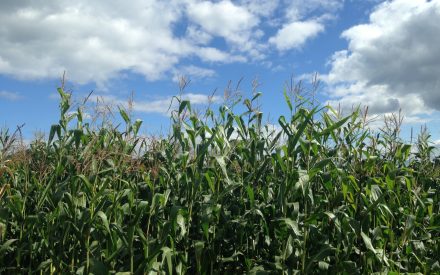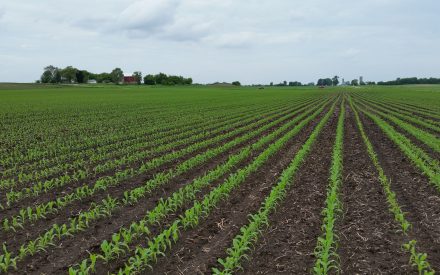Maryland cover crop study reveals their impact on nitrate leaching
Nitrate loads to groundwater have increased statewide, with studies estimating that over 10% of private wells in Wisconsin exceed the health standard of 10 mg/L. Researchers are looking at cover crops as part of a solution. Cover crops can take up nitrate in the early spring, a high-risk period for nitrate loss, before grain crops are planted and actively growing.
A recent study in Maryland looked at how cover crop planting date and biomass impacted the amount of nitrate leached into groundwater from agricultural fields. The researchers installed tension lysimeters in sandy and silty soils below the root zone just over 3 or 2 feet deep respectively. Lysimeters directly measure quality and quantity of water percolating or draining through the soil potentially to the groundwater.
After wheat harvest, around 5,000 gallons/ac of liquid dairy manure was applied and a cover crop mix was planted with a no-till drill appropriately every two weeks for 8 weeks (one manure application date, four cover crop planting dates). The cover crop planting was a mix that included 60 lb of triticale, 3 lb of radish, and 8 lb of crimson clover. There was also a control treatment where no cover crop was seeded but weeds were allowed to grow. The cover crop or weed biomass was collected before winterkill and soil porewater was collected with the lysimeter through the winter and spring.
Planting date makes a difference
All of the cover crop planting timings reduced the amount of nitrate leached, but planting timing (growing degree days) and therefore cover crop biomass accumulated impacted how much nitrate was reduced. The first and second planting led to a greater decrease in nitrate leaching, around 80%, compared to the third and fourth planting, which typically only reduced nitrate leaching by around 45% compared to strips with no cover crops.
The reduction in nitrate leached is due to nitrogen taken up by the cover crop roots during the fall and then held in an organic form (plant and root biomass) during the winter and spring. The earlier planting dates were more effective in reducing nitrate leaching due to the greater biomass accumulated and therefore greater amount of nitrogen taken up. Interestingly, this study also illustrated how not all plant biomass is the same. The control plots had weed biomass that was occasionally similar to the amount of cover crop biomass in the late planted treatment, however, the nitrate leached was still much higher in the control plots. This is likely due to the deep and rapid root growth of the cover crops compared to weeds.

Focus on early cover crop planting
The study illustrated the effectiveness of cover crop mixes to reduce nitrate leaching in cropping systems with fall-applied manure. Producers and communities focused on reducing nitrate leaching and keeping more of their nitrogen in place, should maximize growing degree days to accumulate the most cover crop biomass by planting as early as possible. Adding winter wheat or an alternative forage into a rotation leaves adequate time for cover crop establishment, but choosing a corn silage or soybean hybrid with an earlier maturity may have a big impact on the cover crops’ potential groundwater quality benefits. Extension’s Discovery Farms and the Ag Water Quality Program are beginning to collect, analyze, and interpret lysimeter data from different cropping systems across Wisconsin.
Data and summary adapted from Fall cover crop nitrogen uptake drives reduction in winter-spring leaching by Nathan Sedghi and Ray Weil published in the Journal of Environmental Quality In March 2022.

 ▶ Watch: Nitrogen Balance: Reevaluating Crop Rotations for Cleaner Water in Wisconsin
▶ Watch: Nitrogen Balance: Reevaluating Crop Rotations for Cleaner Water in Wisconsin ▶ Watch: Nitrate Leaching: Trends in the Midwest to Local Impacts in Wisconsin
▶ Watch: Nitrate Leaching: Trends in the Midwest to Local Impacts in Wisconsin Manage nitrogen as a budget to reduce groundwater contamination
Manage nitrogen as a budget to reduce groundwater contamination ▶Watch: Optimizing nitrogen use and reducing nitrate leaching
▶Watch: Optimizing nitrogen use and reducing nitrate leaching


